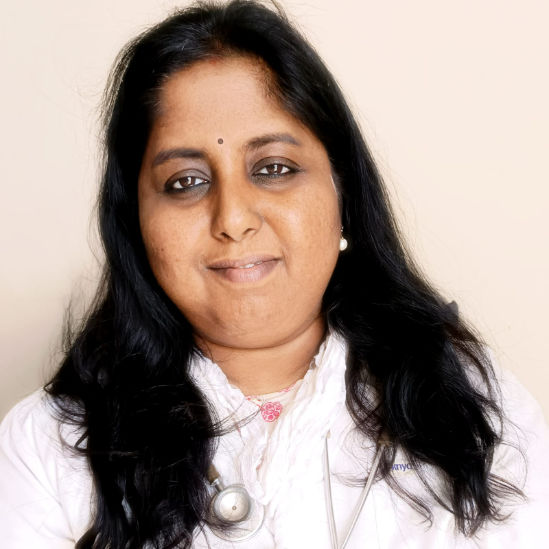Understanding the Red Cell Distribution Width Test
Understand the Red Cell Distribution Width (RDW) test, its significance in a CBC, and what variations in red blood cell size may indicate about anemia and other health conditions.


When you visit your doctor for a check-up or to investigate symptoms like fatigue or weakness, they might order a Red Cell Distribution Width (RDW) test. This simple blood test provides valuable information about your red blood cells (RBCs) and can help diagnose various health conditions.
If you're wondering what RDW means and why it matters, this article will explain everything in simple terms, what the test is, why it’s done, what the results indicate, and how you can take care of your health based on the findings.
What Is the RDW Test?
The Red Cell Distribution Width (RDW) test measures the variation in the size and volume of your red blood cells. Normally, RBCs are roughly the same size. However, if there’s a significant difference in their sizes (some too small, some too large), it could indicate an underlying health issue.
The RDW test is usually part of a Complete Blood Count (CBC), a common blood test that checks overall health and detects conditions like anemia, infections, and other disorders.
Consult a Top Specialist
Why Is the RDW Test Done?
Your doctor may recommend an RDW test if you have symptoms such as:
- Fatigue or weakness
- Pale skin
- Shortness of breath
- Dizziness
- Cold hands and feet
These symptoms could suggest anemia (low red blood cells or hemoglobin) or other blood-related conditions. The RDW test helps determine:
- The type of anemia (iron deficiency, vitamin B12 deficiency, etc.)
- Whether you have a chronic disease affecting blood cells
- Possible nutritional deficiencies
Understanding RDW Test Results
The RDW is reported as a percentage. A normal RDW range is typically between 11.5% and 14.5%, but this may vary slightly depending on the lab.
What Does a High RDW Mean?
If your RDW is higher than normal, it means your red blood cells vary significantly in size. This could indicate:
- Iron deficiency anemia (most common cause)
- Vitamin B12 or folate deficiency anemia
- Chronic liver or kidney disease
- Bone marrow disorders
- Hemolytic anemia (where RBCs are destroyed faster than they’re made)
What Does a Low RDW Mean?
A low RDW (less than 11.5%) is less common and usually not a major concern. It simply means your red blood cells are very uniform in size, which is generally a good sign.
However, if you still have symptoms like fatigue, your doctor may check for other conditions, such as thalassemia (a genetic blood disorder).
How Can You Improve Your RDW Levels?
If your RDW is high due to a nutritional deficiency, you can take steps to improve it:
1. Eat Iron-Rich Foods (For Iron Deficiency Anemia)
- Leafy greens (spinach, kale)
- Red meat, poultry, fish
- Beans, lentils, tofu
- Fortified cereals
2. Increase Vitamin B12 & Folate Intake
- Eggs, dairy, meat (for B12)
- Leafy greens, citrus fruits, nuts (for folate)
3. Stay Hydrated & Maintain a Balanced Diet
- Drink enough water to support healthy blood circulation.
- Avoid excessive alcohol, which can affect RBC production.
4. Manage Chronic Conditions
If your high RDW is due to a chronic illness (like kidney disease), follow your doctor’s treatment plan to keep it under control.
When Should You See a Doctor?
If you experience persistent fatigue, weakness, or other symptoms of anemia, consult your doctor. They may recommend:
- A Complete Blood Count (CBC) test
- Additional tests (iron, vitamin B12, folate levels)
- Treatment based on the underlying cause
If you need a blood test, you can easily book a CBC test or consultation through Apollo 24|7 for quick and reliable results.
Get Your Health Assessed
Final Thoughts
The RDW test is a simple but powerful tool to assess your red blood cell health. While an abnormal result doesn’t always mean a serious problem, it helps doctors identify potential deficiencies or diseases early. By eating a balanced diet, staying hydrated, and following medical advice, you can maintain healthy red blood cells and overall well-being. If you have concerns about your blood health, don’t hesitate to reach out to a healthcare provider.
Consult a Top Specialist
Consult a Top Specialist

Dr. Lakshmi Sanjitha Kakani
General Physician/ Internal Medicine Specialist
6 Years • MBBS, MD (General Medicine)
Visakhapatnam
Apollo 24|7 Clinic - Andhra Pradesh, Visakhapatnam

Dr. Mohammed Kamran
General Practitioner
5 Years • MBBS, FIDM
Nashik
Apollo 24|7 Clinic - Maharashtra, Nashik

Dr. Dhankecha Mayank
General Practitioner
6 Years • MBBS
Hyderabad
Apollo 24|7 Clinic - Telangana, Hyderabad

Dr. Vasanthasree Nair
General Practitioner
15 Years • MBBS
Angamaly
Apollo 24|7 Clinic - Kerala, Angamaly
(500+ Patients)

Dr Divya Lekha Gunta
General Practitioner
10 Years • MBBS, MD (Pathology)
Visakhapatnam
Apollo 24|7 Clinic - Andhra Pradesh, Visakhapatnam
Consult a Top Specialist

Dr. Lakshmi Sanjitha Kakani
General Physician/ Internal Medicine Specialist
6 Years • MBBS, MD (General Medicine)
Visakhapatnam
Apollo 24|7 Clinic - Andhra Pradesh, Visakhapatnam

Dr. Mohammed Kamran
General Practitioner
5 Years • MBBS, FIDM
Nashik
Apollo 24|7 Clinic - Maharashtra, Nashik

Dr. Dhankecha Mayank
General Practitioner
6 Years • MBBS
Hyderabad
Apollo 24|7 Clinic - Telangana, Hyderabad

Dr. Vasanthasree Nair
General Practitioner
15 Years • MBBS
Angamaly
Apollo 24|7 Clinic - Kerala, Angamaly
(500+ Patients)

Dr Divya Lekha Gunta
General Practitioner
10 Years • MBBS, MD (Pathology)
Visakhapatnam
Apollo 24|7 Clinic - Andhra Pradesh, Visakhapatnam


.webp)